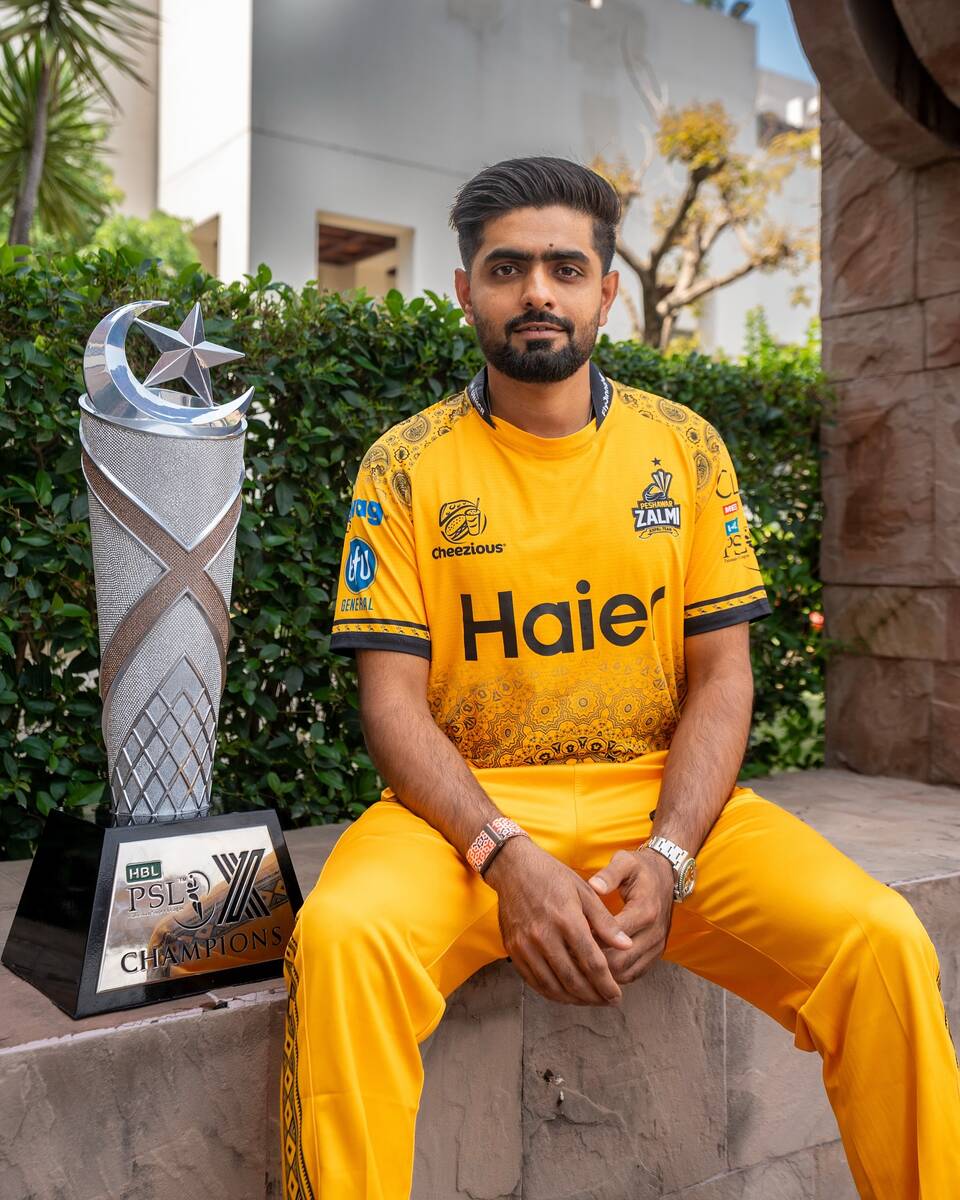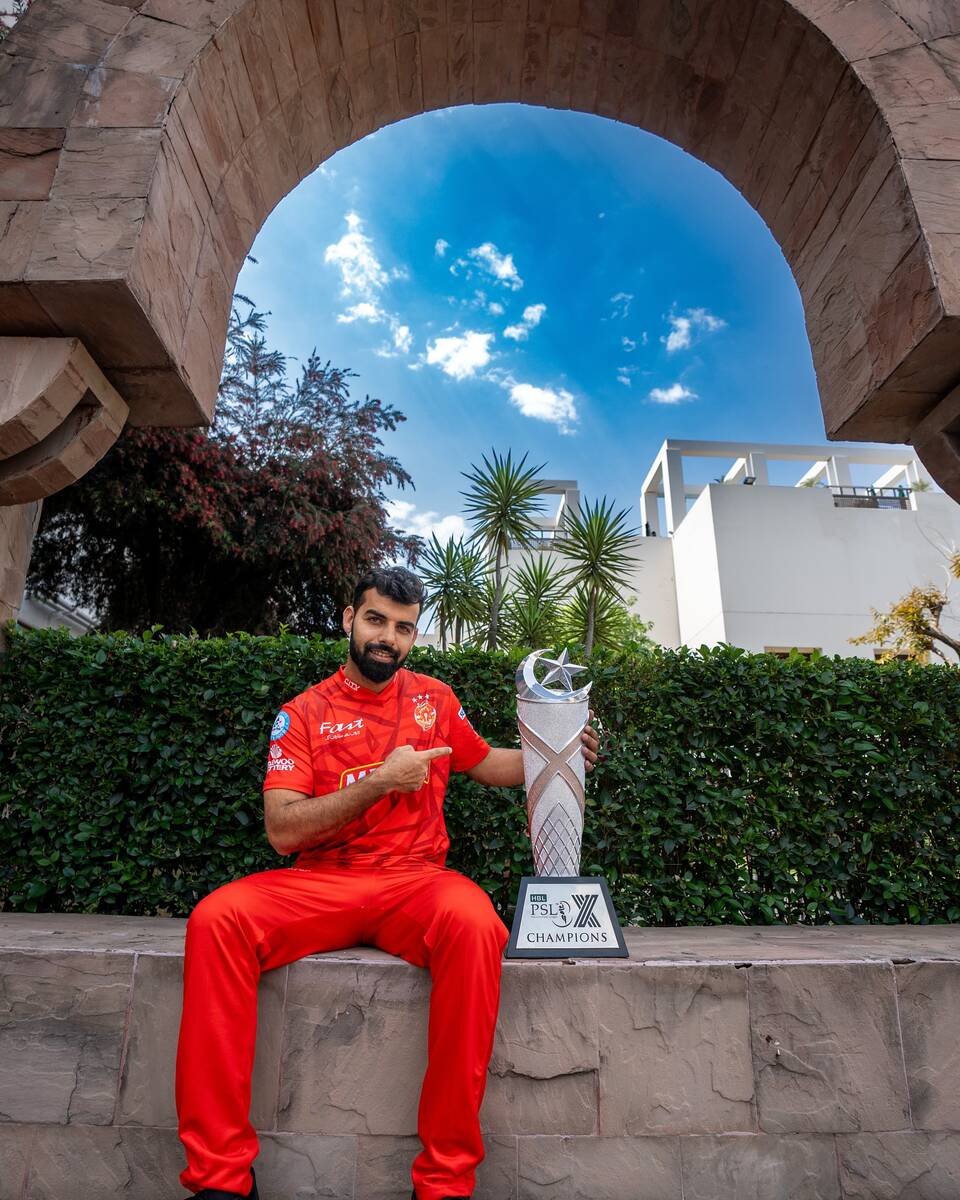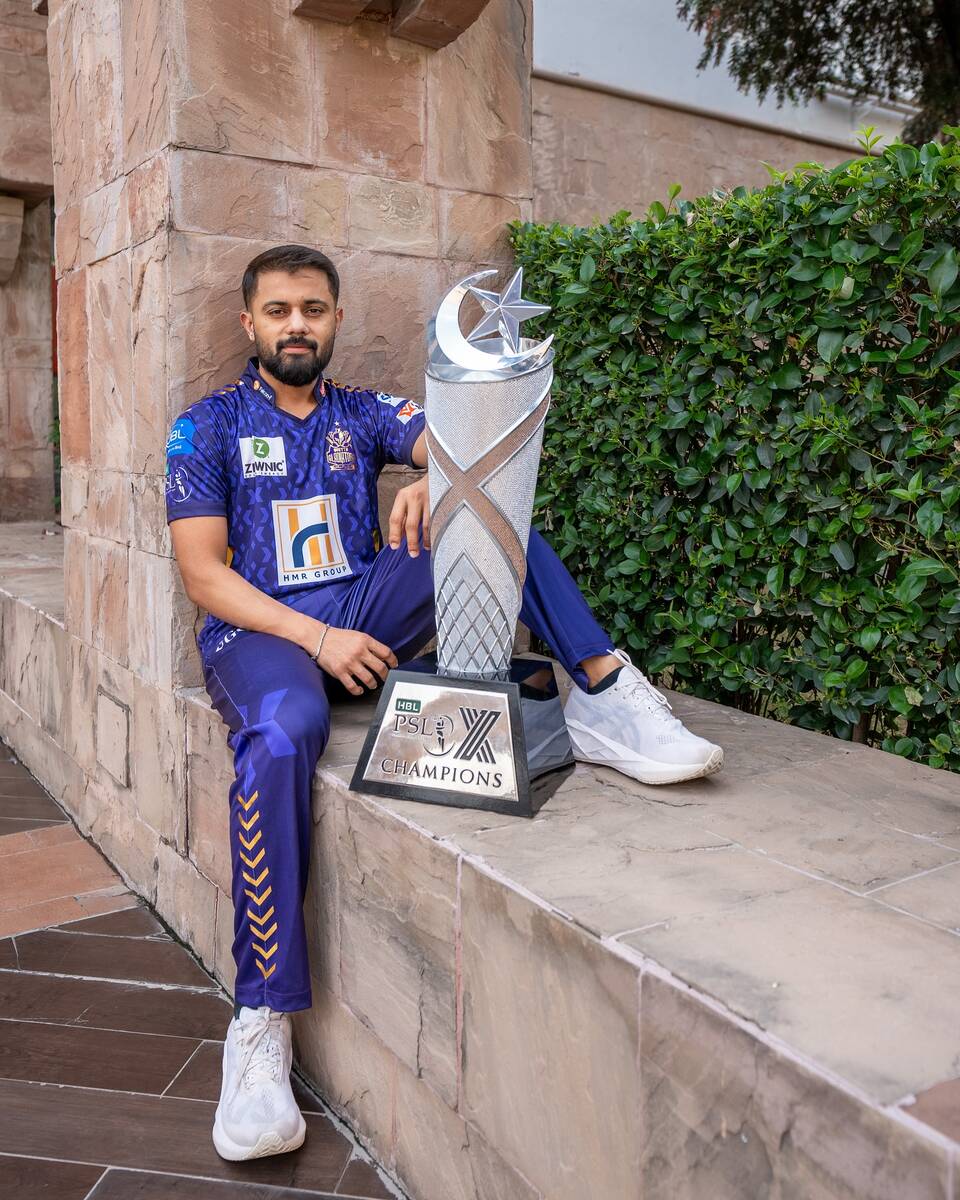DUBAI: The 10th edition of the Pakistan Super League is set to open in Rawalpindi on April 11. Islamabad United, defending champions and the most successful franchise in PSL history with three titles, will face-off against the Lahore Qalandars. Sadly, it has been hard to ignore the off-field issues which have overshadowed the anticipatory excitement.
The PSL finds itself at a crossroads. Hosting the ICC Champions Trophy in an already crowded cricket calendar has squeezed it into a direct clash with the Indian Premier League. This scheduling challenge has affected the build-up and player availability.
While Pakistan Cricket Board CEO Salman Naseer has remained optimistic, the situation is acute. The PSL is striving to carve out its identity amid the growing sea of franchise leagues around the world. Once regarded as the second-best franchise tournament, it now faces fierce competition for the status.
Against that background Pakistan’s cricket remains fractured, with political instability and infighting within the board making the headlines. In a recent podcast, Multan Sultans owner Ali Khan Tareen, publicly criticized the PCB and the PSL’s management for “embracing mediocrity,” further highlighting the divisions within the sport. If the PSL is to overcome these hurdles and thrive, it will need everyone to unite for its future.
Another obstacle facing the PSL is player drain. Apart from the concurrently running IPL, the England and Wales Cricket Board has adopted a harder line toward releasing its contracted players for overseas tournaments during the English season. This means many top overseas stars are tied to either the IPL or county contracts, leaving PSL teams with weaker rosters than previously. Nevertheless, the PSL has consistently brought joy to the nation through homegrown stars like Babar Azam, Fakhar Zaman and Naseem Shah.
They will need to step up and fresh new talents must make their mark to help prove the PSL can be more than just a domestic competition. There is no doubt it has established itself within the country’s cultural identity.
Aspirations to become a truly global product have been tempered by the growth of other franchise leagues, especially ILT20 and SA20. Given that the PSL franchises are subject to renewal and expansion after this 10th edition, the next few weeks will be crucial in determining whether the PSL can attract continued investment at home, let alone international viewing figures to support any claim to be global. Competing head-on with the IPL for such viewers places pressure on the players to play attractive and meaningful cricket.
The Karachi Kings look able to do this. They are led by David Warner, supported by James Vince, and appear to be a formidable side, with a well-rounded squad that covers the essential aspects of the game. Their pace attack is both potent and varied, offering a range of threats. The spin bowling department is equally strong, providing the perfect balance of options for different match situations. A batting lineup containing Kane Williamson combines power-hitting with finesse and possesses the flexibility to adapt to any challenge.

In this handout photo, released on April 10, 2025, Pakistan Super League franchise Karachi Kings’ Vice Captain Hassan Ali gestures with PSL Season 10 Trophy in Islamabad. (Photo courtesy: Handout/PSL)
Adding to the team’s strength is new head coach Ravi Bopara, who brings a wealth of experience and a long-standing connection to the franchise, dating back to the first edition as a player. This new dynamic signals a promising future, with the Karachi Kings looking well-positioned to make a deep run in the tournament.

In this handout photo, released on April 10, 2025, Pakistan Super League franchise Peshawar Zalmi’s Captain Babar Azam gestures with PSL Season 10 Trophy in Islamabad. (Photo courtesy: Handout/PSL)
Peshawar Zalmi have received a timely boost with the news that Saim Ayub has recovered from an injury sustained in South Africa. He is set to open the batting alongside Babar Azam, who will be eager to rediscover his best form after a recent period of struggle. In the bowling department, Zalmi are likely to lean heavily on their spin attack, with the trio of Yaqoob, Mumtaz and Sufyan Muqeem expected to play key roles. While the team has the potential to reach the knockout stages, I do not foresee them having quite enough firepower to mount a serious challenge for the trophy.

In this handout photo, released on April 10, 2025, Pakistan Super League franchise Islamabad United’s Captain Shahdab Khan gestures with PSL Season 10 Trophy in Islamabad. (Photo courtesy: Handout/PSL)
Defending champions Islamabad United, true to style, boast a squad brimming with power hitters. I fully expect them to continue playing an aggressive brand of cricket. The addition of Matthew Short will significantly strengthen their batting lineup and their pace attack will be spearheaded by Naseem Shah, a key player who will lead from the front. However, Shadab Khan’s role will be crucial in maintaining the right balance within the team. He has struggled with the ball for a while and must find a way to regain form if Islamabad are to successfully defend their title. I expect them to be strong contenders.

In this handout photo, released on April 10, 2025, Pakistan Super League franchise Lahore Qalandars’ Captain Shaheen Shah Afridi gestures with PSL Season 10 Trophy in Islamabad. (Photo courtesy: Handout/PSL)
Lahore Qalandars have experienced both ends of the spectrum in the PSL, finishing bottom of the points table a record five times yet securing back-to-back titles in 2022 and 2023. This season, there is a shift in the coaching setup after Aqib Javed moved on to a national team role. Darren Gough was initially set to take over but pulled out at the last minute, leaving Russell Domingo to step in.
In the early years of the PSL, the Qalandars attracted some of the biggest names but struggled to find consistency. This year’s squad lacks players of that ilk who could propel them to the top. Captain Shaheen Shah Afridi has faced challenges with his form, adding further pressure. However, there are a few bright spots, such as young Rishad Hosain, who could prove an exciting prospect. Lahore will also be hoping Daryl Mitchell can make a significant impact. Despite these potential positives, I expect the Qalandars to face challenges and run the risk of a bottom two finish.

In this handout photo, released on April 10, 2025, Pakistan Super League franchise Multan Sultans’ Muhammad Rizwan gestures with PSL Season 10 Trophy in Islamabad. (Photo courtesy: Handout/PSL)
Multan Sultans seem to have a well-balanced squad, with a solid mix of aggressive batters and touch players. Their all-rounders, particularly Michael Bracewell, have been in excellent form, adding depth to both the batting and bowling departments.
Young Akif, who recently represented Pakistan, comes into the tournament with a keen sense of pace and confidence, while Hasnain will be eager to make a significant mark with his new team.
Having been runners-up for the past three years and champions in 2021, Multan has a proven method, consistently challenging for the top spot. A combination of a well-rounded team and a sound strategic approach should enable them to challenge Karachi Kings for the title once again. Whether it is sufficient to claim the crown remains to be seen.

In this handout photo, released on April 10, 2025, Pakistan Super League franchise Quetta Gladiators’ Saud Shakeel gestures with PSL Season 10 Trophy in Islamabad. (Photo courtesy: Handout/PSL)
Quetta Gladiators have struggled to make an impact on the PSL over the past five years. With Sarfaraz Ahmed stepping into the coaching role, replacing Shane Watson, the franchise is hoping for a fresh direction. However, their recruitment strategy over the years has left much to be desired, with the decision to let go of promising young players in favor of loyalty to the seniors.
The early success of the Gladiators was built on familiarity, with many players having come through the ranks in local club cricket. However, as other teams modernized and built strong cultures, Quetta has remained stagnant, failing to evolve in the same way.
This season, they will hope New Zealand’s Mark Chapman can inject some much-needed firepower into the batting lineup, while 42-year-old Shoaib Malik will be relied upon to bring his vast experience to guide the middle order. On the bowling front, Kyle Jamieson’s height and pace should pose problems for opposition batters. However, despite these additions, it is difficult to see Quetta’s fortunes turning around this season.
On the cusp of PSL X 2025, I have a personal note of hope — that agendas and off-field distractions are few and far between, allowing the focus to shift squarely onto the tournament. After the disappointment of the Champions Trophy and the sub-standard national team performances of late, both the country and the PSL need a successful 10th edition. This will raise spirits overall and make the PSL an attractive investment space as it enters a second decade.
















